Geyser Springs - Upper Basin
Page 1 2
A narrows in the south and an abrupt rise of the canyon floor mark the end of the Lower Basin. The area south of the narrows is called Upper Basin, where the canyon becomes wider as the Lower Basin but for a shorter expansion in length. Within the northern part of Upper Basin thermal features are mainly ranged along the western and the eastern hillsides.
The slightly boiling Empress Spring is the most noticeable feature in the east.
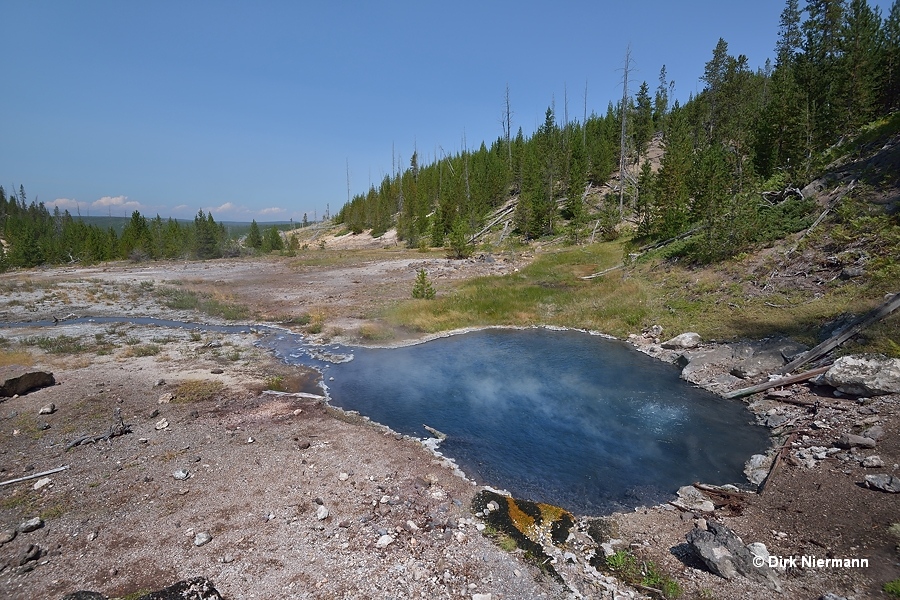
The western canyon slope is flanked by a number of smaller springs, most of them rather inconspicuous. GGSNN020 is an exception in terms of size and color, worth watching.
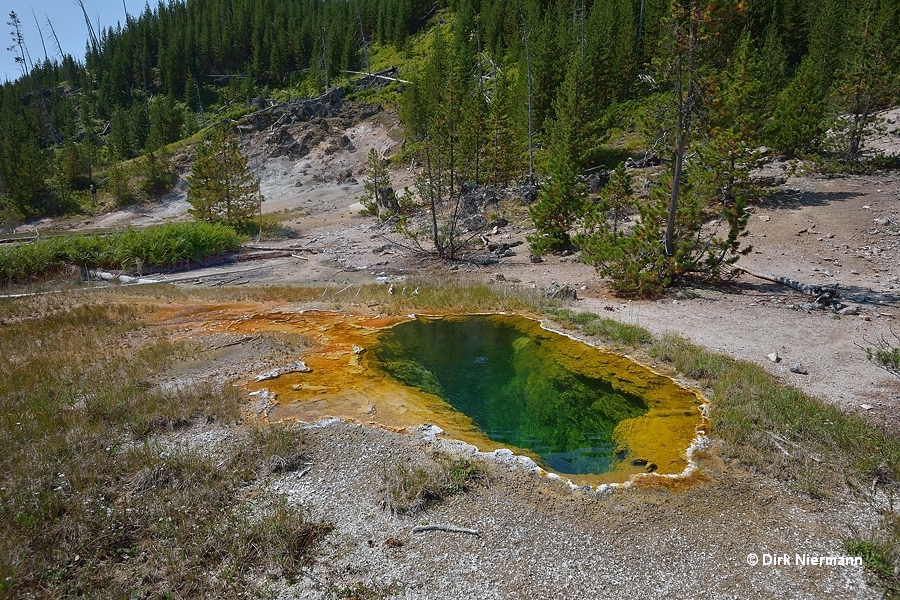
In the south the Upper Basin concludes with a couple of springs embedded in a large sinter shield.
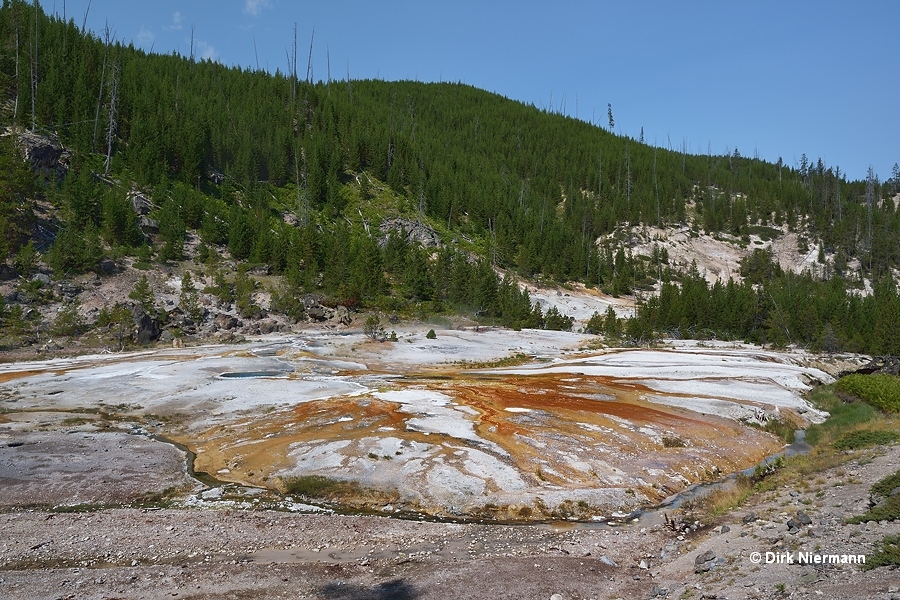
One of the named features here is Bat Pool. Even if it shows frequent intermittent spouting activity of a few feet height, the main point of interest and also reason for its name is a small colony of bats, nesting in a crack of a nearby boulder.
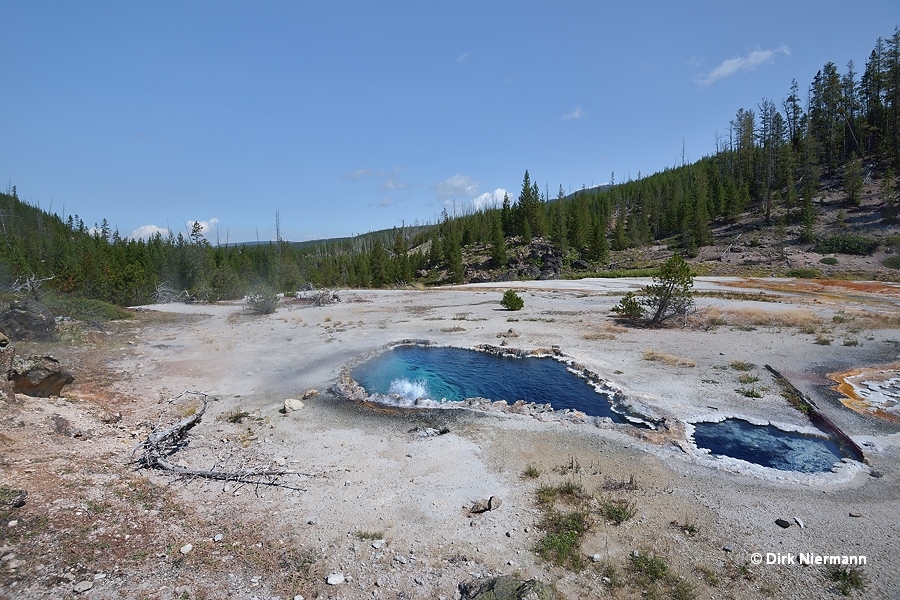
A few feet east of Bat Pool two smaller, unnamed blue pools appear, the larger of which is designated as GGSNN009.
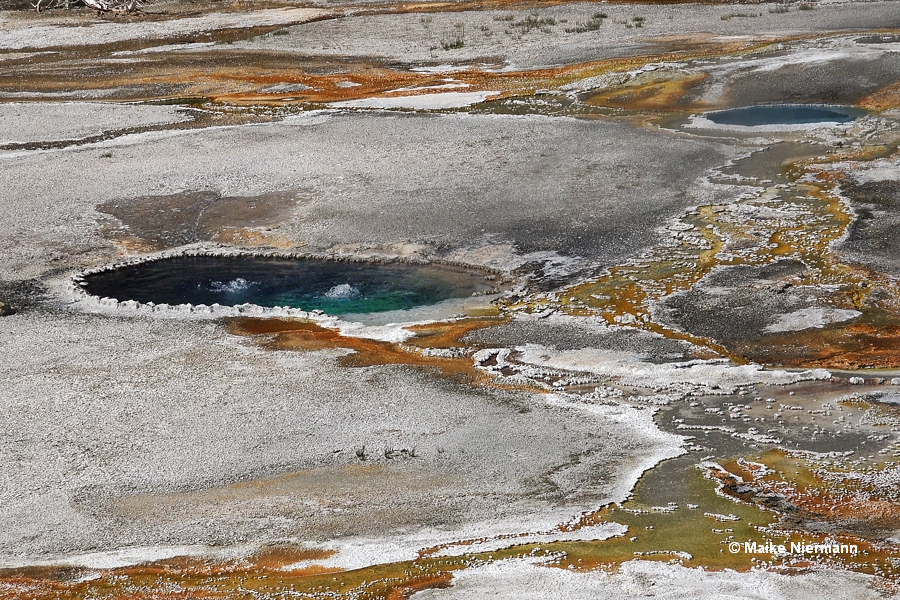
Another named feature on the sinter shield is called Tiny Geyser, what exactly it is. It’s so tiny that looking for it without stepping on intact sinter is more or less a waste of time, so I shot a picture of the larger dark spring south of Bat Pool instead.
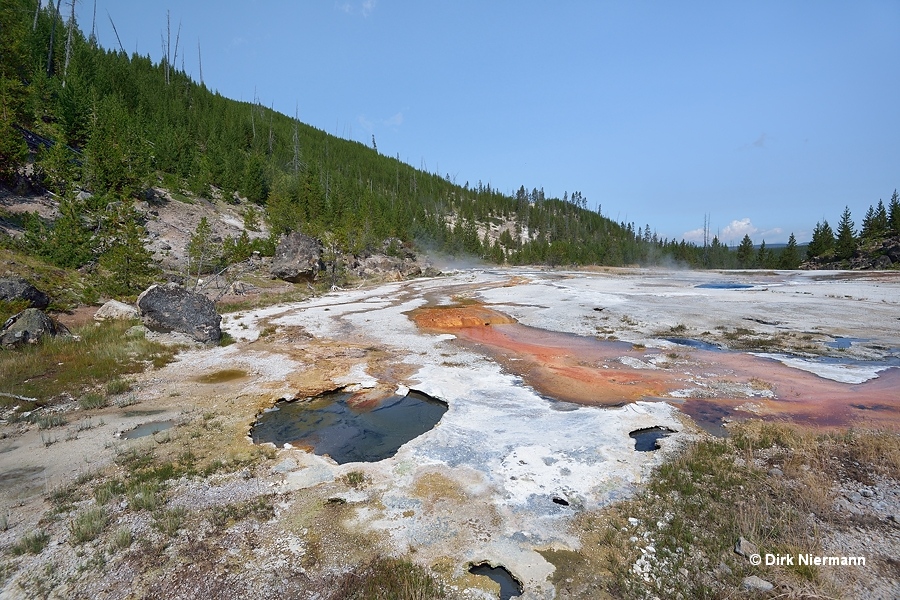
Beyond the sinter shield the canyon narrows significantly and also the bottom becomes forested. Some thermal features of Geyser Creek Group are still scattered about this arduously accessible area. Examples are the perpetual spouters GGSNN007, GGSNN001, and GGSNN002.
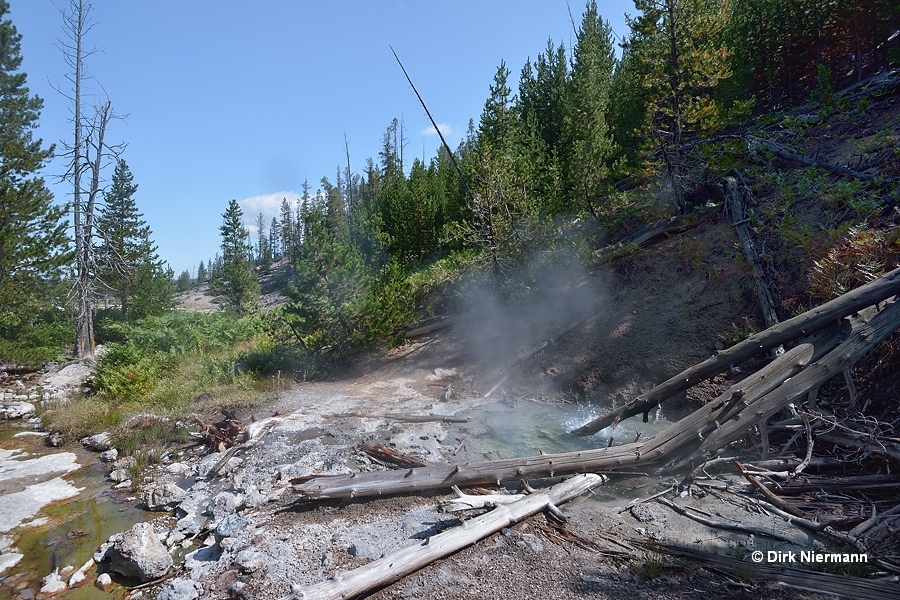
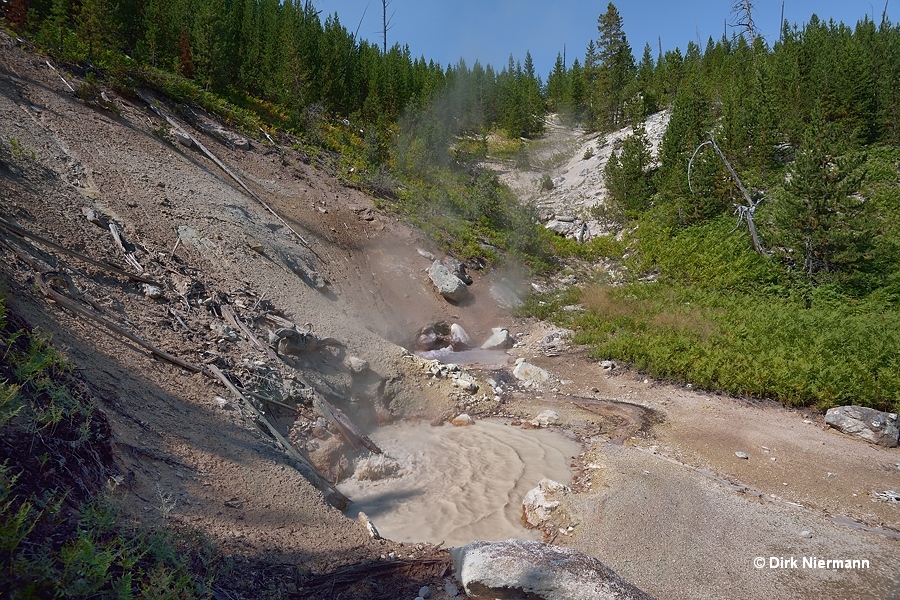
Geyser Creek Canyon keeps a last secret until the very end. Hard to detect on a steep slope “The Monster” is lurking. This massive perpetual spouter underneath a widely protruding rock ledge was quite tame during our visit, though.
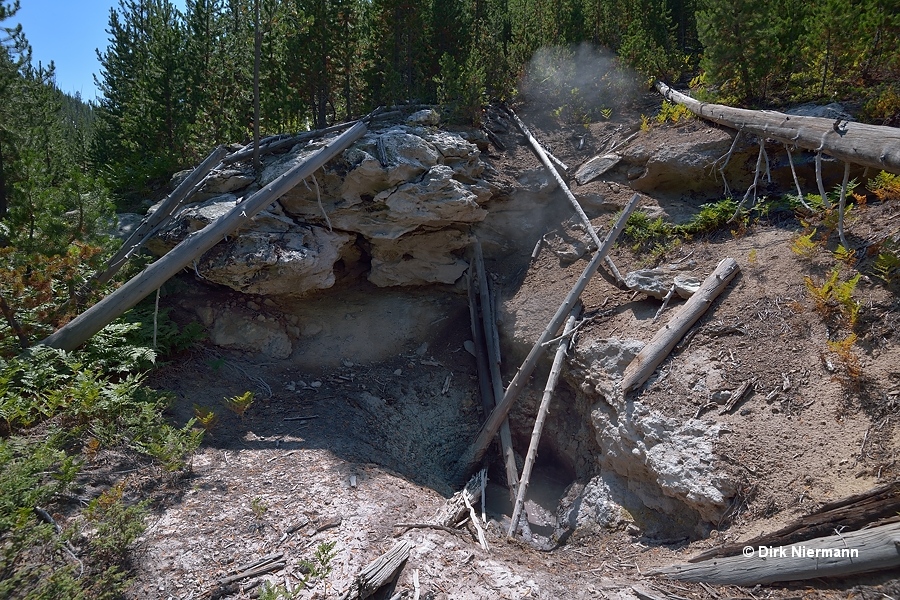
Page 1 2